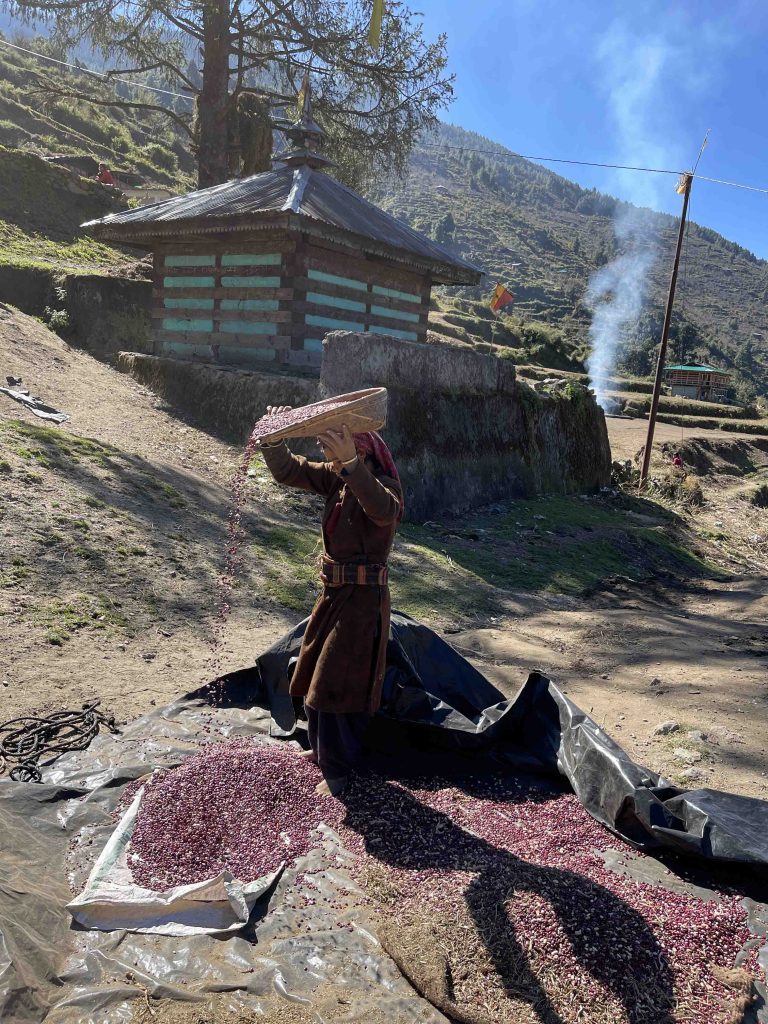GUEST COLUMN : A Green Party for Uttarakhand?

Hillbilly
Monday, 24 January 2022 | Lokesh Ohri | Dehradun
Uttarakhand is at the cusp of another decisive election. For years, successive governments have belied the simple expectations of citizens of this small hill state, endowed with immense natural resources and picturesque landscapes.The worrying fact is that wily politicians have been able to divert, with help from a malleable media, people’s attention from real issues this time around too.
Uttarakhand politics, which earlier revolved around migration, corruption, drug menace, lack of educational and health infrastructure and joblessness, has this time round shifted focus to temples, especially the Char Dham, ahead of the crucial polls. While one party is claiming credit for the road to nowhere- the Char Dham mega highway, and the restoration of the temple at Kedarnath, the other is saying that they were the ones that actually started the restoration. While their pitch has been somewhat queered by the tug-of-war on the Devasthanam Board issue, the third party jumping into the fray is claiming to transform the state into the spiritual capital of India. As elections loom on the horizon it is becoming clear that political expediency is preferred by a lazy political class. The onus now lies on every citizen to ensure that those begging for votes today begin addressing the core issues that have stubbornly refused to be tackled even twenty one years after statehood.

Indeed, Kedarnath needed to be restored, but the manner in which even that minor project was handled has left a lot to be desired. That, however, may be a completely different debate. So, let us not digress and stick to the upcoming election. For any state, if one single place of worship begins to dictate the agenda, the trend surely indicates that the new government voted to power will also continue to grope in the dark for all the years of its term, leaving the common Uttarakhandi even more disgruntled. Voters in Uttarakhand must be wary of this and it is their duty to ensure that the real issues in the election must not be lost sight of. Voters must inquire about every politician’s vision for the state, especially on the question of the state’s environment, because, to my mind most issues the state faces: distress migration, unemployment, growing need for hospitals and complete destruction of traditional economic activities such as agro-pastoralism, are linked directly to a systematic destruction of the state’s environment, thanks to the politician-contractor nexus.
In the last few months I have had the occasion of travelling to quite a few villages in Garhwal and Kumaon. As you enter each village, you are greeted by several sign boards thanking political masters for free rations. Needless to mention, the boards have been put up by the masters themselves. When you engage in conversation with villagers, especially marginal farmers, you realise that people have given up agriculture, or their traditional occupations completely, thanks to the lure of free foodgrain.Villager after villager has told me that farming or grazing livestock is not viable anymore with low yields and even lower support prices. Monkey and wild boar menace, and the fact that most able bodied people from the village have left for the cities, in search for secure incomes, now makes farming impossible. In villages, farming has always been a community and not an individual activity; and the “security” offered by city incomes was, however, clearly on display during the long march back during the first Covid lockdown. Few seem bothered, but to me the sceptre of self-respecting, hardy men and women giving up the work of their ancestors and becoming completely dependent on government’s largesse is a horrifying prospect. Such situations are fertile ground for more out-migration, further leaving the community fabric in tatters. Remember, if community disappears, mountain life will suffer a meltdown. And it has already begun on a massive scale.
The recent alarming statistic of the falling participation of hill districts in the democratic process clearly shows that the hills are losing their representation in the polity. Today 60% of the voters from Uttarakhand come from the districts of Dehradun, Haridwar, Nainital and Udham Singh Nagar. Of the 1,32,291 voters added to the voter lists this election, 85,877 are from these very districts in the plains. When delimitation is done in the coming years, the plains will gain a number of seats, further marginalising issues of the mountains. Amongst them migration seems to have been accepted as fiat accompli and a non-issue of sorts. Subsuming local issues like migration into national ones goes well with our lazy political discourse, the netas having lost touch with issues in their constituency, conveniently want to ride one wave or the other. Come, shake them out of their stupor!
Most political leaders I have broached the topic of migration with, give two prime reasons for it: lack of health facilities and good education. But what they fail to see is that these are problems that have always been endemic to hill regions. People have endured them and much more, and still stuck to their traditional connection with soil and nature. Why is it that today, people are forced to abandon home and hearth for jobs that generally offer a pittance, and forces people to endure the ills of urban living? Most landowning village families I have known over the years that have migrated to Dehradun, continue to live in slum-like conditions. Today, lack of vision and thought for those dwelling in the mountains is tearing apart the social fabric, forcing people to migrate. Their connect with nature and community, and its many benedictions seems to be rupturing. The sheer lack of talent in terms of political leadership in the state means that no one is even thinking of the impact of large-scale migration from the hills.
Uttarakhand was a state formed on the back of momentous ecological protest movements such as Chipko and the Anti-Tehri Dam Movement, that became hallmarks of environmentalism and made the world sit up and take note of the resilience, and love for nature, of Himalayan communities. Statehood has severed that strong link with nature that communities shared. Grassroot political empowerment has led to rootlessness, as if everyone wants a piece of the political pie, but none wants to grow the grains to make the dough. As a result, no one is interested in drawing-up a long term vision for the state, especially in terms of its human-environment interaction.
The kernel of Uttarakhand’s long term survival and growth lies in its ecological assets. Its rivers, Ganga, Yamuna, Kali, Saryu and others, are the lifelines of North India. Damming and polluting them at a pace at which we are going today will damn the water security of the entire nation. The forests of the state, despite their gross neglect, still cover 45.44% of the geographical area. However, this has been achieved at the cost of fencing in forests and fencing out communities. Forest cover needs to be enhanced with indigenous species, giving food, fodder and firewood to communities. Large scale planting of fruit trees on village boundaries will perhaps offer enough food to monkeys. A solid waste management programme for villages is essential because it is garbage that attracts wild animals and leads to man-animal conflict.
A completely new system of education, rather than a copy-paste from the centrally designed CBSE curriculum needs to be devised to enable education that helps mountain dwellers survive and thrive in the villages. This curriculum needs to focus on nature, organic agro-pastoralism and hospitality, for communities to earn from their landscapes. Once incomes are good enough, health facilities and all other amenities will trek up the mountain themselves. Our vernacular architecture, languages, folklore and songs, in brief the pahadi way of life, needs to be supported through the state’s political programmes. Then, experiential tourism, which is growing exponentially across the world, will allow the development dividend to directly reach the pockets of the village dwellers. Even today, with our Char Dham dependent model of development, tourism contributes almost 70% of the state’s GDP. But this model is surely transforming experiential pilgrimage into pleasure-seeking, selfie-driven, narcissistic tourism. By making the Char Dhams the leitmotifs of our tourism, are we not making the mistake of putting all our eggs in one fragile basket?
It is for the voter to seek answers to these questions from their future political representatives. Until then, the contractor-politician nexus will continue to have a field day. Therefore, the question: Is it time for a Green Party for Uttarakhand?
(The writer isan anthropologist, author, traveler & activist who also runs a public walking group called Been There, Doon That? Views expressed are personal)





